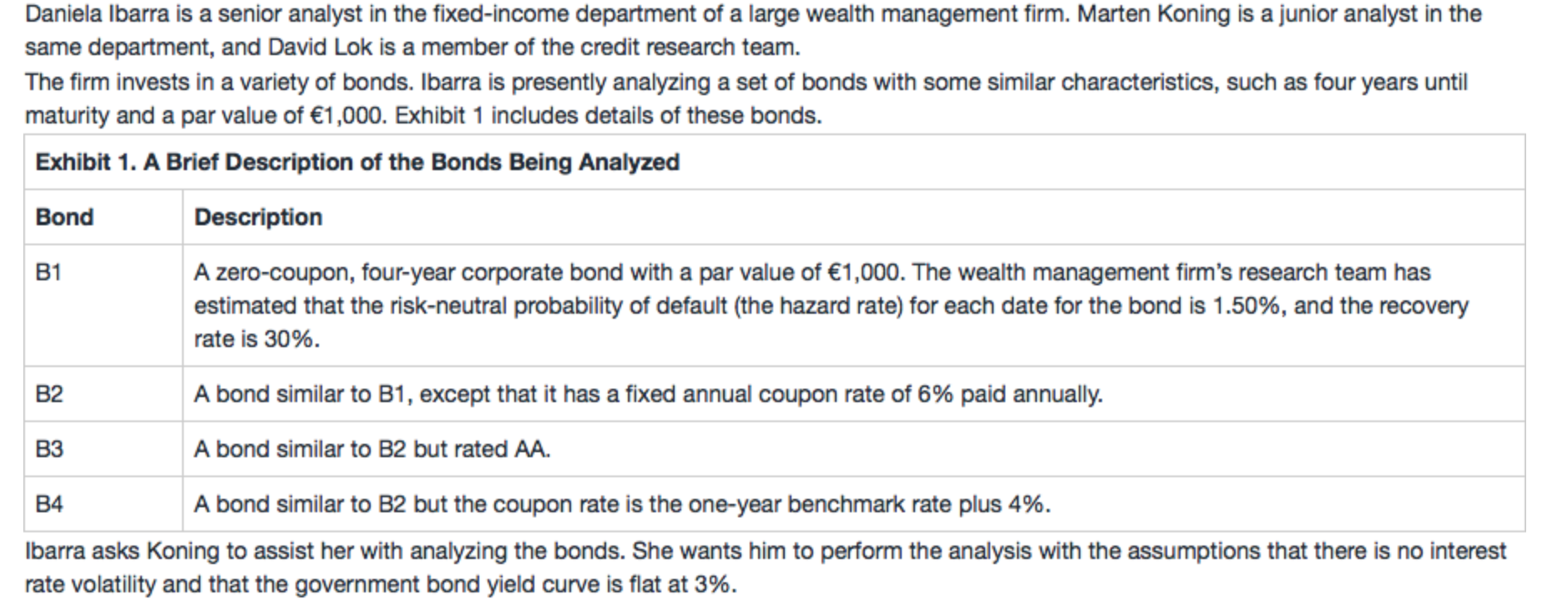NO.PZ201812310200000101
问题如下:
The market price of bond B1 is€875. The bond is:
选项:
A.fairly valued.
B.overvalued.
C.undervalued.
解释:
B is correct.
The following table shows that the credit valuation adjustment (CVA) for the bond is
€36.49, the sum of the present values of expected loss. The steps taken to complete the table are as follows.
Step 1: Exposure at Date T is , where r is 3%. That is, exposure is computed by discounting the face value of the bond using the risk-free rate and the number of years until maturity.
Step 2: Recovery = Exposure × Recovery rate
Step 3: Loss given default (LGD) = Exposure – Recovery
Step 4: Probability of default (POD) on Date 1 is 1.50%, the assumed hazard rate. The probability of survival (POS) on Date 1 is 98.50%.
For subsequent dates, POD is calculated as the hazard rate multiplied by the previous date’s POS.
For example, to determine the Date 2 POD (1.4775%), the hazard rate of (1.50%) is multiplied by the Date 1 POS (98.50%).
Step 5: POS in Dates 2–4 = POS in the previous year – POD
(That is, POS in Year T= POS in year [ T– 1] – POD in Year T.)
POS can also be determined by subtracting the hazard rate from 100% and raising it to the power of the number of years:
(100% – 1.5000%)1 = 98.5000%
(100% – 1.5000%)2 = 97.0225%
(100% – 1.5000%)3 = 95.5672%
(100% – 1.5000%)4 = 94.1337%
Step 6: Expected loss = LGD × POD
Step 7: Discount factor (DF) for Date T is , where r is 3%.
Step 8: PV of expected loss = Expected loss × DF


Value of the bond if the bond were default free would be 1,000 × DF for Date 4 = €888.49.
Fair value of the bond considering CVA = €888.49 – CVA = €888.49 – €36.49 = €852.00.
Because the market price of the bond (€875) is greater than the fair value of €852, B is correct.
A is incorrect because the market price of the bond differs from its fair value. C is incorrect because although the bond’s value if the bond were default free is greater than the market price, the bond has a risk of default, and CVA lowers its fair value to below the market price.
计算vnd不是直接用表格里的spot rate4来算吗,也就是直接用df4,算出等于913。怎么又自己搞出另一个df





